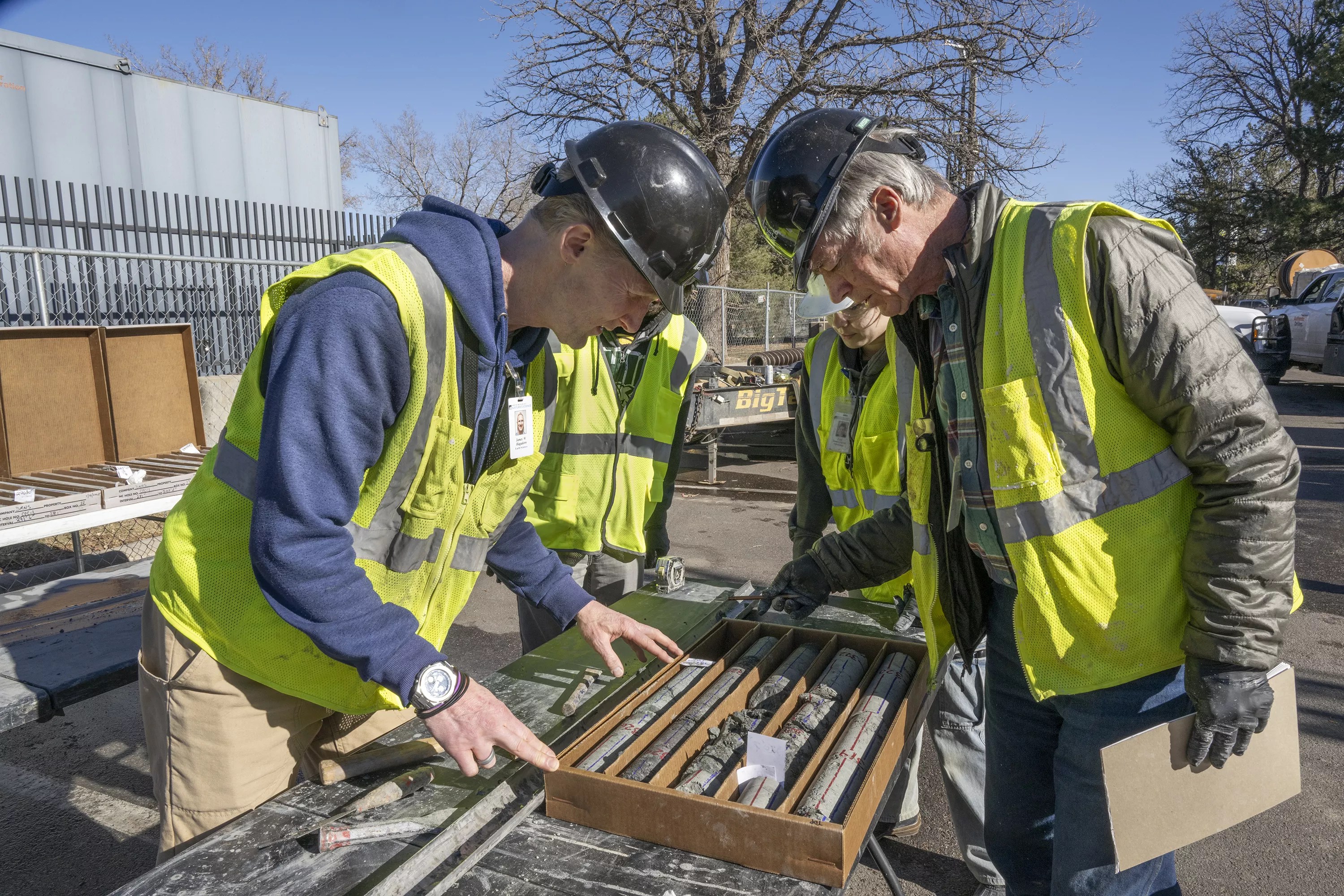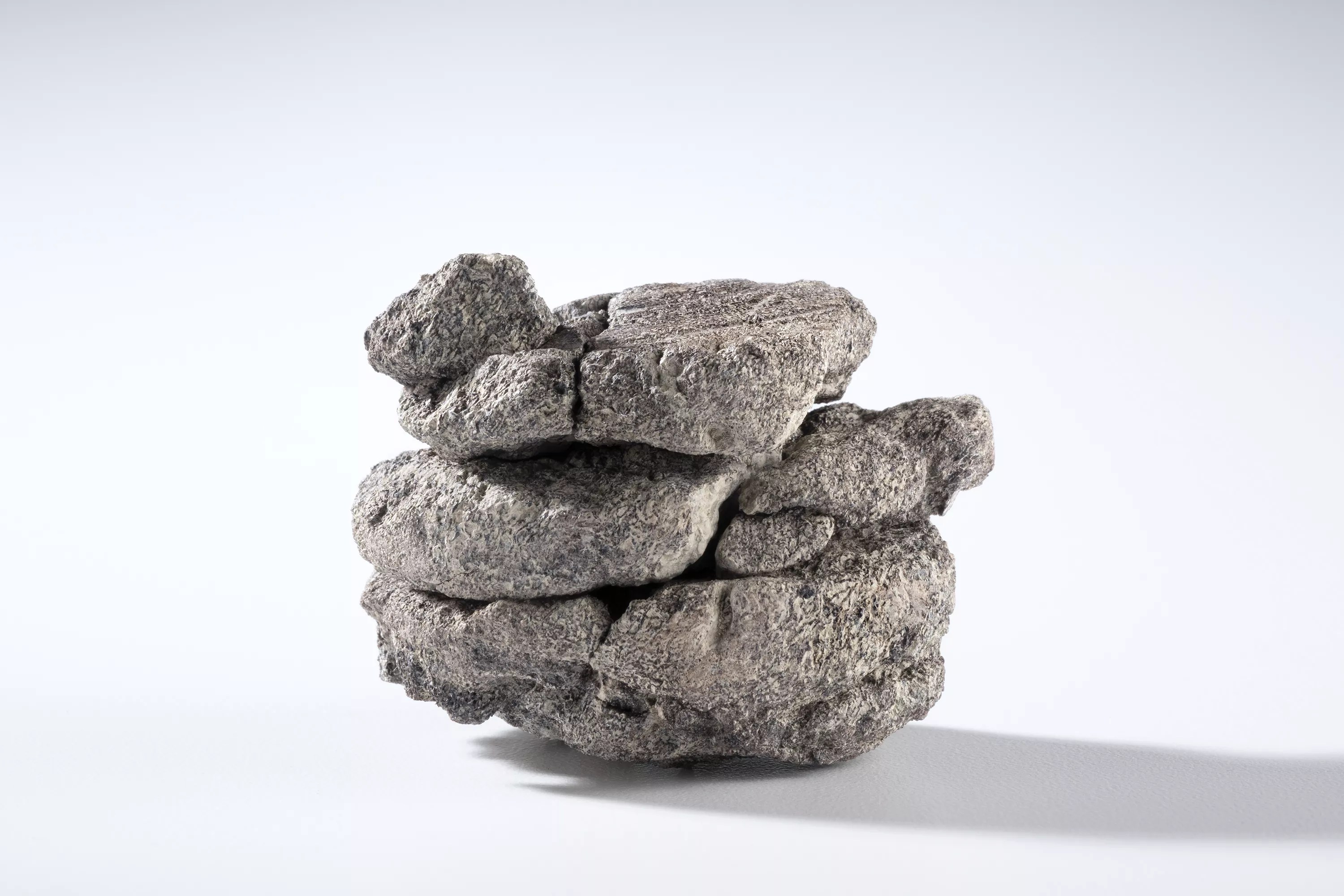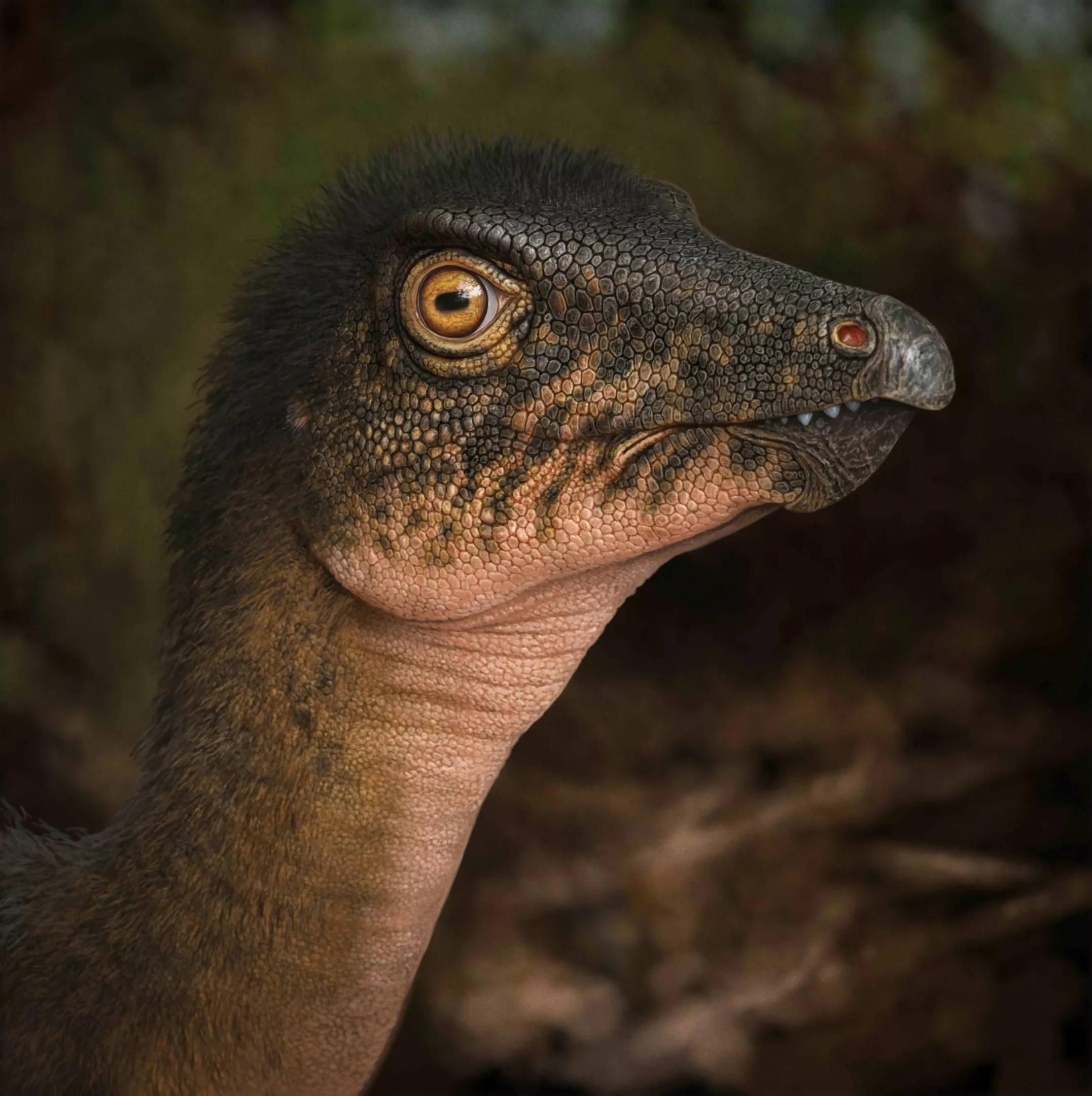
DMNS

Audio By Carbonatix
It turns out that you don’t have to look far for dinosaur fossils in Denver – just deep. The Denver Museum of Nature & Science just announced that researchers found one 763 feet below the surface of its own parking lot.
The partial bone fossil researchers unearthed is similar to the vertebrae of a Thescelosaurus, a plant-eating dinosaur that lived during the Cretaceous Period 67 million years ago. The fossil is the deepest and oldest dinosaur fossil ever found within Denver city limits, according to the DMNS.

A portion of the dinosaur bone recovered from the scientific core — drilled 763 feet below the surface of the Museum’s parking lot in City Park.
DMNS
What was the DMNS doing more than 700 feet below the ground? Conducting a geothermal test drilling project to assess the viability of transitioning from natural gas to geothermal energy. In 2024, the museum was awarded a $250,000 grant through Governor Jared Polis’s Geothermal Energy Grant Program and the Colorado Energy Office – part of a $7.7 million statewide investment to reduce greenhouse gas emissions and transition to clean energy.
Denver, make your New Year’s Resolution Count!
We’re $17,500 away from our End-of-Year campaign goal, with just a five days left! We’re ready to deliver — but we need the resources to do it right. If Westword matters to you, please contribute today to help us expand our current events coverage when it’s needed most.
James Hagadorn, curator of geology at DMNS, says that the geothermal study, which took place in January, has helped guide potential strategies for designing a geothermal system to accommodate the museum’s long-term heating, air-conditioning and domestic hot water needs. “Over the long term, making this transition will save the museum money, create fewer greenhouse gases, reduce pressure on the region’s electrical grid,and increase the predictability of energy costs for both the museum and our utility provider,” Hagadorn says.
While the team was working there, it took the opportunity to better understand the geology of the Denver Basin.
Dinosaur Ridge, just fifteen miles outside of downtown Denver, is famous for its abundant dinosaur fossils – but finding one during a drilling project is rare.

The vertebrae of a Thescelosaurus, a plant-eating ornithopod dinosaur during the latest Cretaceous Period nearly 67 million years ago, is similar to the one found in the rock core deep below the museum.
DMNS
The discovery of the fossil is helping researchers learn more about the ancient environments that lie below the museum and its home at the edge of City Park, as well as how Colorado has changed over millions of years. “This core is important because it’s like a lone dot in the middle of a giant geologic connect-the-dots puzzle of rocks that surround Denver,” Hagadorn says. “It helps us to link and to better understand rocks, fossils and resources like drinking water that lie underfoot.”
Hagadorn adds that the fossil “comes from an era just before the mass extinction that wiped out the dinosaurs, and it offers a rare window into the ecosystem that once existed right beneath modern-day Denver.”
The discovery also begs the question: Does this mean there could be a lot of dinosaur bones and fossils deep below the Mile High City?
“Yes,” Hagadorn says. “This area is rich in fossils as well as untapped underground geology. More discoveries await!”
The parking lot fossil is now on display at the museum in the Discovering Teen Rex exhibition.
“In my 35 years at the museum, we’ve never had an opportunity quite like this – to study the deep geologic layers beneath our feet with such precision,” says Earth sciences research associate Bob Raynolds. “That this fossil turned up here in City Park is nothing short of magical.”